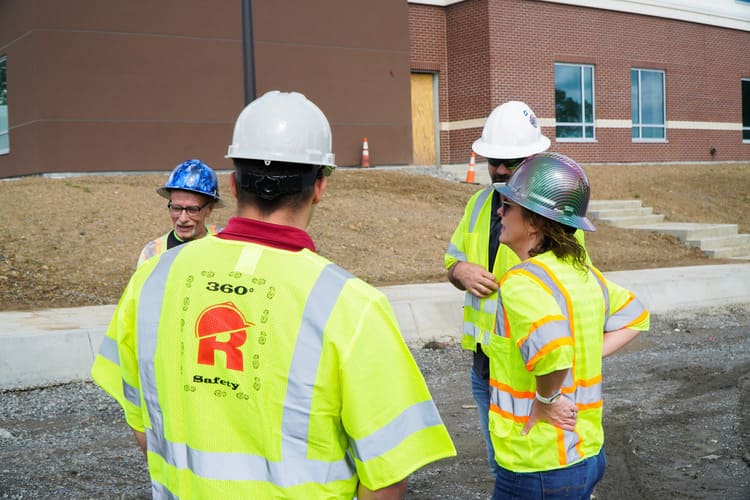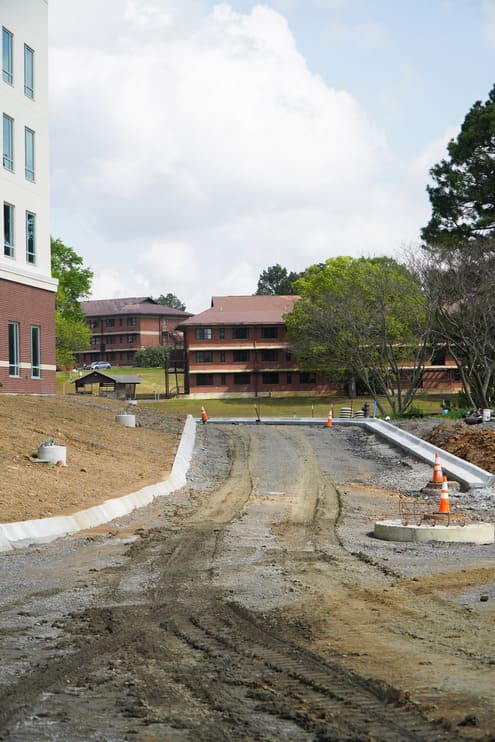Ventilation is a fundamental aspect of construction that, too often, is overlooked. Ensuring effective ventilation makes sure that indoor spaces are as comfortable, healthy, and free from excess moisture and pollutants.
How does ventilation create healthy indoor environments?
Proper ventilation is essential for creating healthy indoor environments in construction. It helps builders to achieve the following:
Improved air quality
Good ventilation ensures a continuous supply of fresh outdoor air, and the removal of indoor pollutants that can build up– including volatile organic compounds like carbon monoxide– and allergens.
Moisture control
Adequately ventilated indoor environments reduce or prevent moisture buildup, which in turn prevents hazardous mold growth and structural damage over time.
Temperature regulation
Ventilation plays an important role in keeping interior environments comfortable, by reducing excess heat and humidity.

How does ventilation make spaces more comfortable?
Ventilation makes a big difference in the comfort of an indoor space, which is essential for both commercial and residential buildings alike.
Thermal comfort
Proper ventilation keeps spaces comfortable by preventing them from becoming too hot or too cold.
Humidity control
Ventilation regulates indoor humidity levels, preventing the discomfort that can be caused by either excessive moisture or dry air.
Odor control
Effective ventilation reduces odors from cooking, pets, and other sources, improving occupants’ experience within a space.
Energy efficiency and cost savings
Ventilation in construction can have a big impact on energy efficiency, potentially allowing for major savings in energy costs.
Energy savings
Energy-efficient ventilation systems, like heat recovery ventilators (HRVs) and energy recovery ventilators (ERVs) can help recover heat or coolness from outgoing air, reducing the load on heating and cooling systems and saving building or home owners plenty of money in the long run.
Lower operating costs
Good ventilation can result in lower energy bills, due to reduced heating and cooling demands, which makes it a great investment in the long run.

Preserving building integrity
Ventilation is extremely important in preserving the integrity of a building over time.
Preventing moisture damage
Adequate ventilation prevents moisture buildup, which over time can lead to structural damage, rot, and the deterioration of building materials– potentially making a building hazardous to inhabit.
Mold and mildew prevention
Proper ventilation reduces the risk of mold and mildew growth, which can both compromise indoor air quality and damage surfaces, causing potentially dangerous health concerns and costly damages.
Protection against building decay
Ventilation helps to maintain the condition of materials and surfaces within a building, which can greatly prolong the lifespan of a structure– which is great for historical buildings and modern buildings alike.
Legal requirements and building codes
Many building codes and regulations require specific ventilation standards to ensure the safety and well-being of building occupants. Remaining compliant with these standards is necessary for construction projects to receive the necessary approvals and certifications.
Failure to adhere to ventilation requirements can lead to legal issues and challenges during the construction process– and potentially hazardous conditions for workers and occupants.
Types of ventilation systems
In construction, various ventilation systems can be employed to ensure the best possible indoor air quality and comfort. These might include:
Natural ventilation
Utilizing the flow of outdoor air through openings like windows and vents to maintain indoor air quality.
Mechanical ventilation
Incorporating mechanical systems like exhaust fans, air handlers, and HVAC systems to control airflow and air quality.
Balanced ventilation
Combining both supply and exhaust mechanisms to maintain a healthy, balanced air flow and improve overall energy efficiency.
Spot ventilation
Targeted ventilation in specific areas like bathrooms and kitchens can greatly help to remove moisture and odors.
A necessity, not a luxury
Proper ventilation in construction is not just a luxury– it’s a necessity that impacts the health, comfort, and even structural integrity of indoor spaces. Understanding the importance of ventilation, and adhering to building codes and standards, is vital for creating safe, energy-efficient, and long-lasting buildings that benefit both the people who occupy them and the environment.
If you’re interested in working for a company who values the safety and wellbeing of workers just as much as the satisfaction of the client, a job with RedStone Construction Group might be just right for you. Check out our careers page today!


Recent Comments